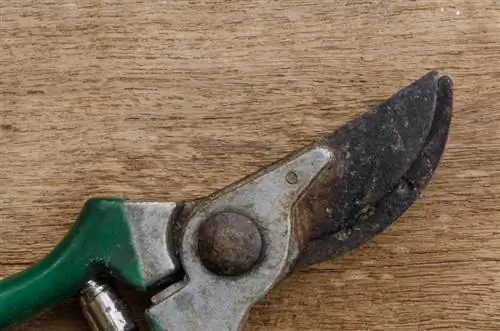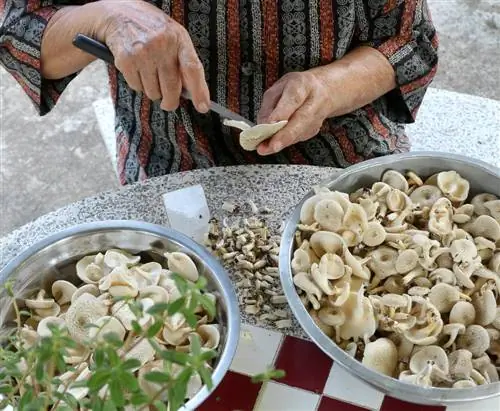- Author admin [email protected].
- Public 2023-12-16 16:46.
- Last modified 2025-01-23 11:20.
In the months of midsummer from the beginning of July to the beginning of September, black-blue blueberries lure you from nature in the forest as a fruity refreshment. However, these should not be consumed unwashed due to the risk of infection with fox tapeworm.

The fox tapeworm and other risks
Basically, only wild blueberries are affected by the risk of fox tapeworm, as their fruits are usually harvested in the wild and at a height of less than 40 centimeters. Even though the risk of infection with the fox tapeworm pathogen through eating wild fruits is negligible, the disease, which can sometimes lead to death, still justifies conscientious handling of wild blueberries. Washing the fruit not only rinses off the invisibly small eggs of the fox tapeworm, but also any sprays and fertilizers that may be present on purchased or hand-picked cultivated blueberries.
Washing as an alternative to heating
The fox tapeworm pathogens could also be killed by heating the blueberries to a temperature of over 60 degrees Celsius. In this regard, it would not necessarily be necessary to wash them with water before preserving blueberries. However, washing the fresh berries doesn't do any harm if the following products are made from the collected and heated blueberries:
- Jam
- Jelly
- Juice
Wash and dry blueberries gently
For particularly gentle washing, the relatively delicate blueberries are placed in a sieve and dipped into a second bowl full of water. Sometimes getting the berries wet can be undesirable when used for freezing or drying. In this case, after the water bath, the blueberries are spread on a layer of kitchen paper and gently dabbed from above with a second layer of kitchen paper. This way you can also prevent the frozen fruits from combining into an inseparable lump.
Tips & Tricks
If you don't want to miss out on the enjoyment of fresh blueberries while collecting them in the forest, you can take a bottle of water with you into the forest and use it to briefly wash the fruit on site.






